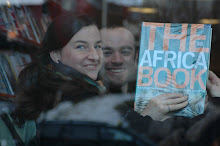Just the name Lebanon evokes strong images for most people, regardless of their religious or political orientation. However I want to talk about two different experiences we had in this country that is burdened with such a tumultuous past. Two places which have survived the various wars and bloodshed over the past 30 years or so.
The first is of the Audi soap museum in Sidon (Saida). Sidon is about as far south as most people go without starting to take precautions for their safety. It is a small port town with a beautiful old centre where covered souqs get you lost in no time. One of the main tourist attractions is the castle situated on the harbour. A lesser known attraction is the soap museum, paid for by the influential Audi family. Entry to the museum is free and a variety of displays, handouts and exhibits describes in detail the soap-making process and its history in this part of the world. Some of you are probably now thinking that this sounds like a twee little place you would find in the Cameron Highlands but it was really interesting. And visitors were almost encouraged to use the toilet facilities!

Wall of Soap
The second place is the Kahlil Gibran museum in Bcharre. Bcharre is a small mountain village in the north of Lebanon, perched on the ridge of the stunning Qadisha valley, just below the last remaining forest of biblical cedars. It is one of the strongholds of the Maronite Phalange organisation but is also the village in which the poet, philosopher and artist Gibran Khalil Gibran was born. Before anyone in the world recognised his name it had been simplified to Kahlil Gibran. His most famous work '
The Prophet' has become one of
the backpackers favourites. Often criticised for being a bit too idealistic, the point is that sometimes this is exactly what the reader is looking for. As per his dying request his body was laid to rest inside a monastery cut into the rocks at the end of the Qadisha valley. The views from the monastery are some of the most beautiful I have ever seen. The entire monastery has now been converted into the Gibran museum, displaying excerpts from his manuscripts as well as a significant collection of his lesser known artistic work as a painter. The 'tomb' is open to visitors also, although his coffin is partially hidden behind a tree root that has grown through the ceiling! Is nothing about this place less than perfect?

Gibran Museum



No comments:
Post a Comment